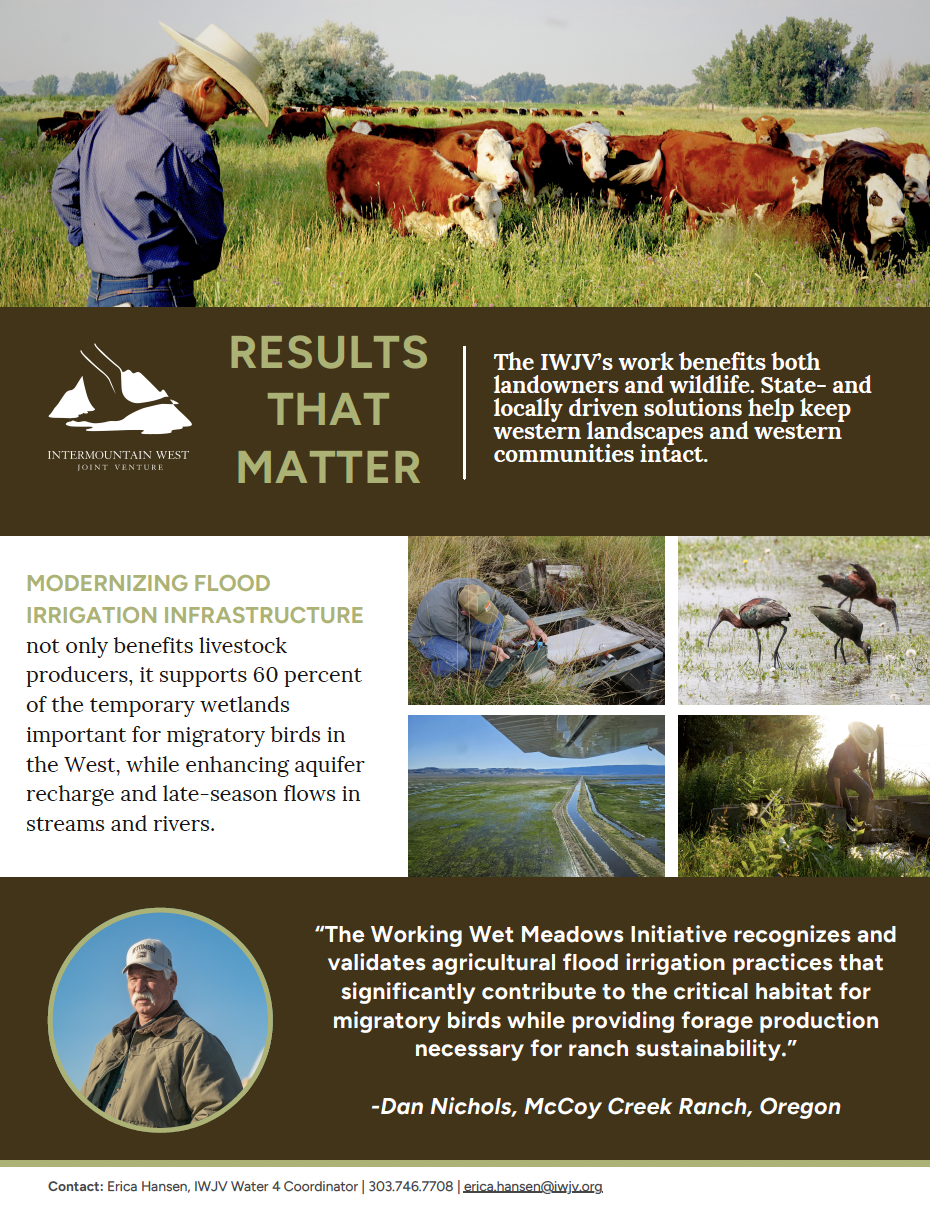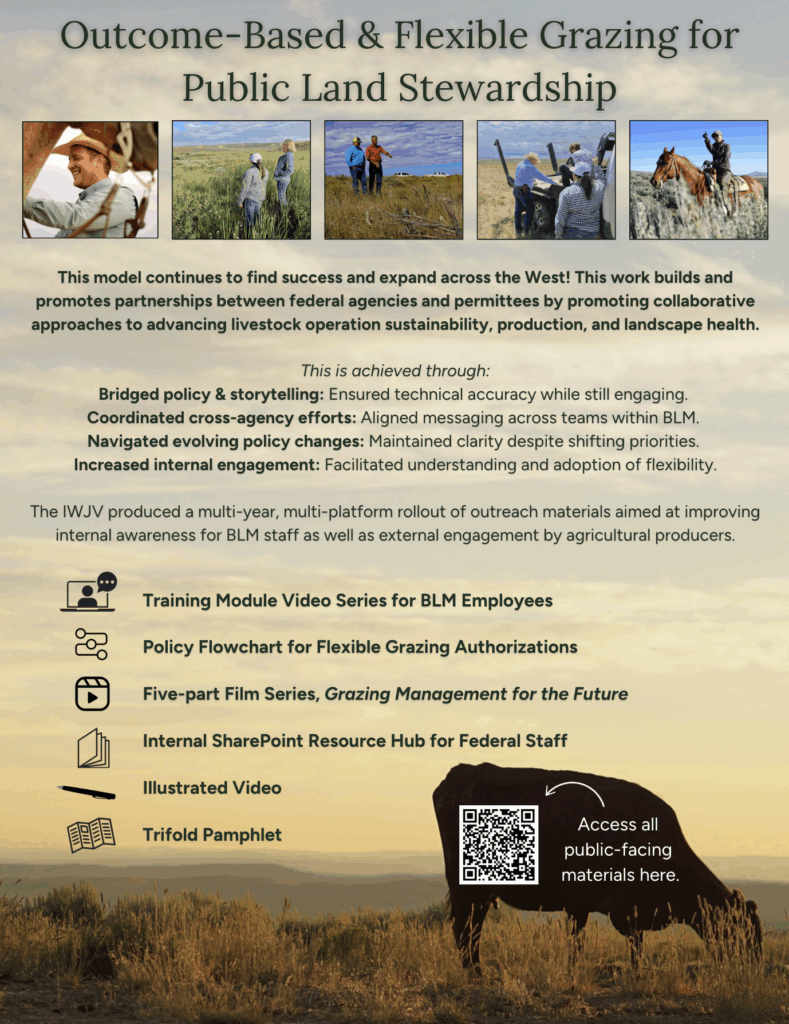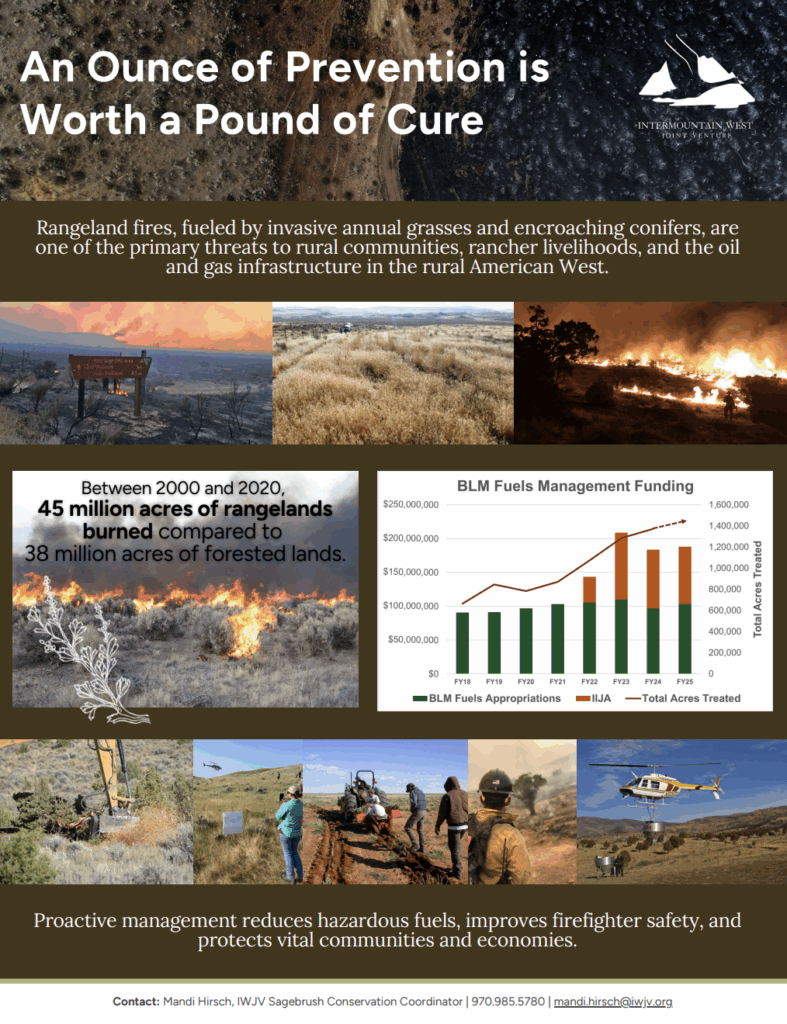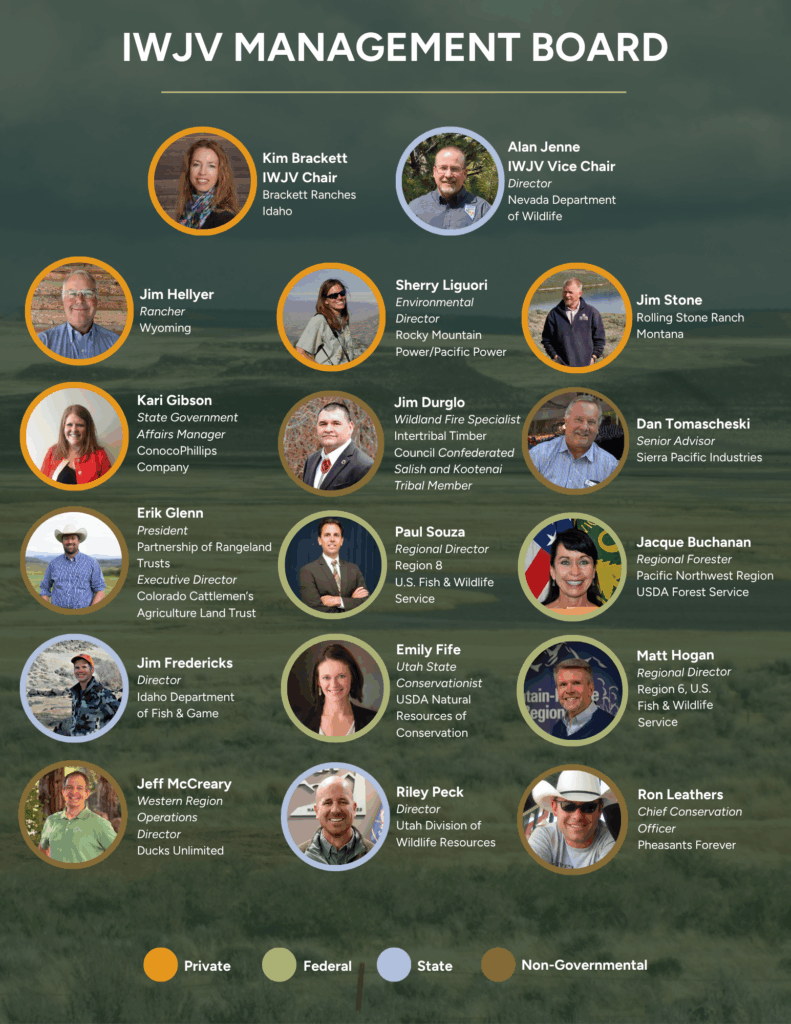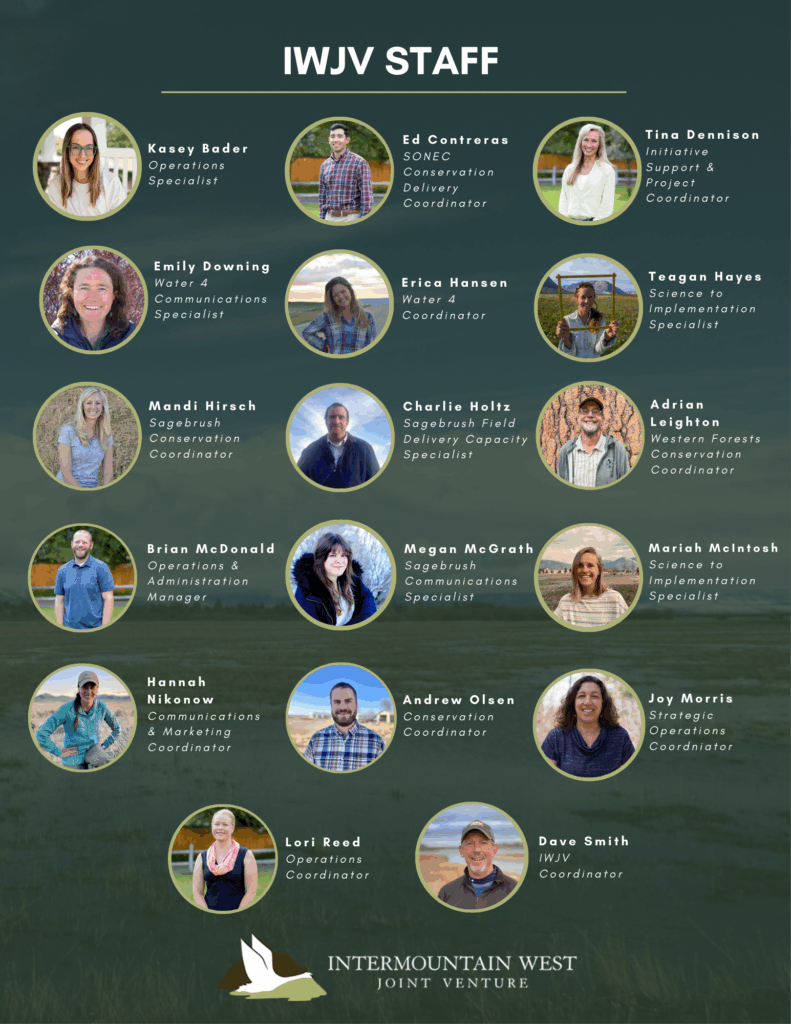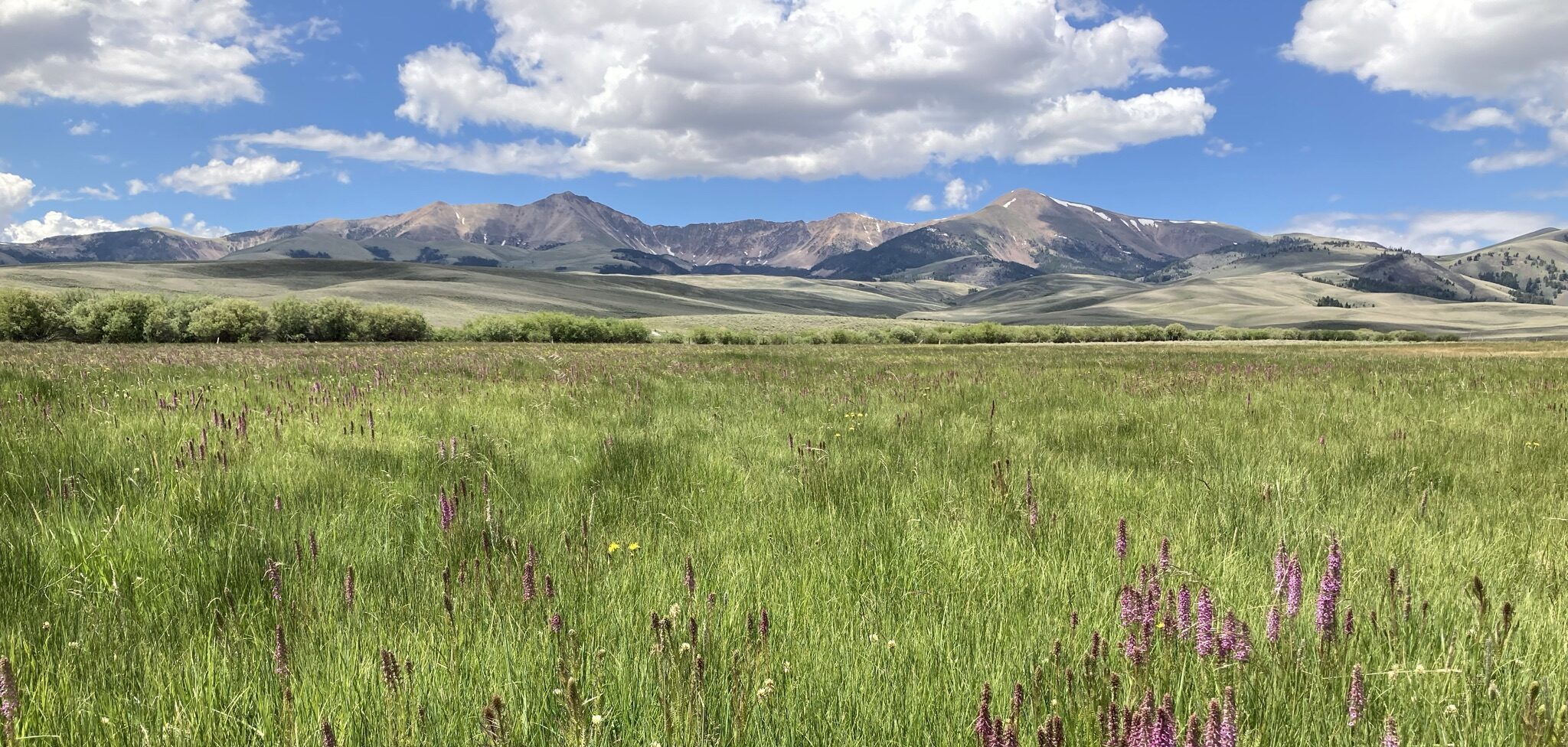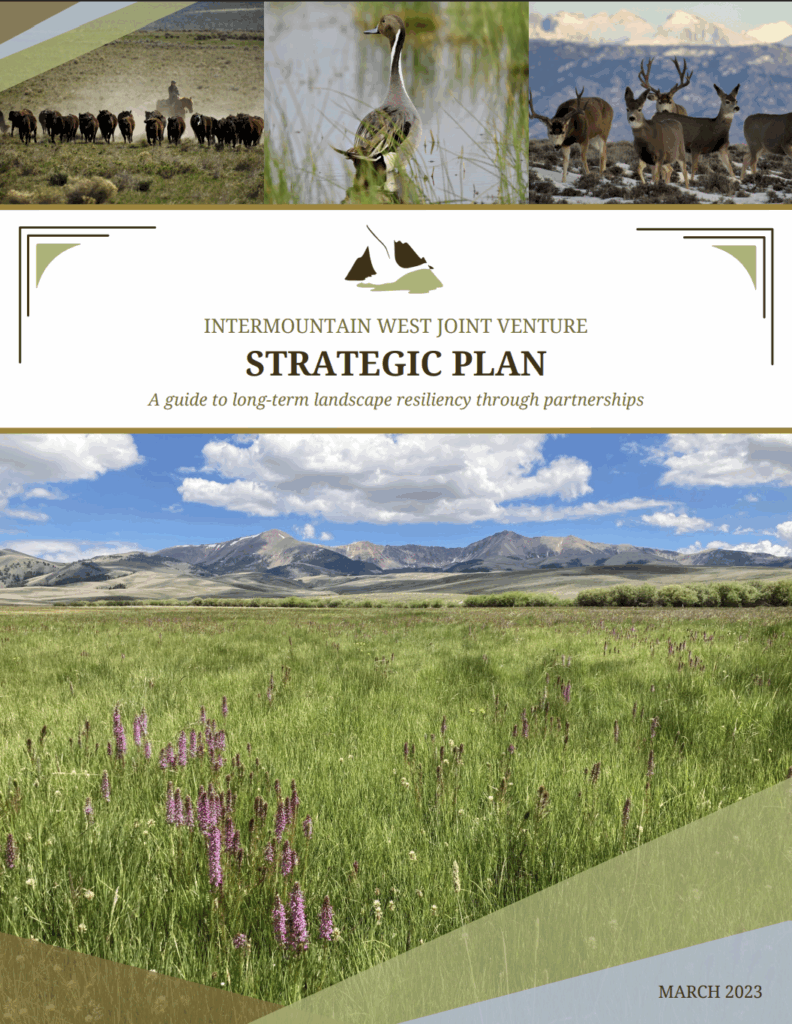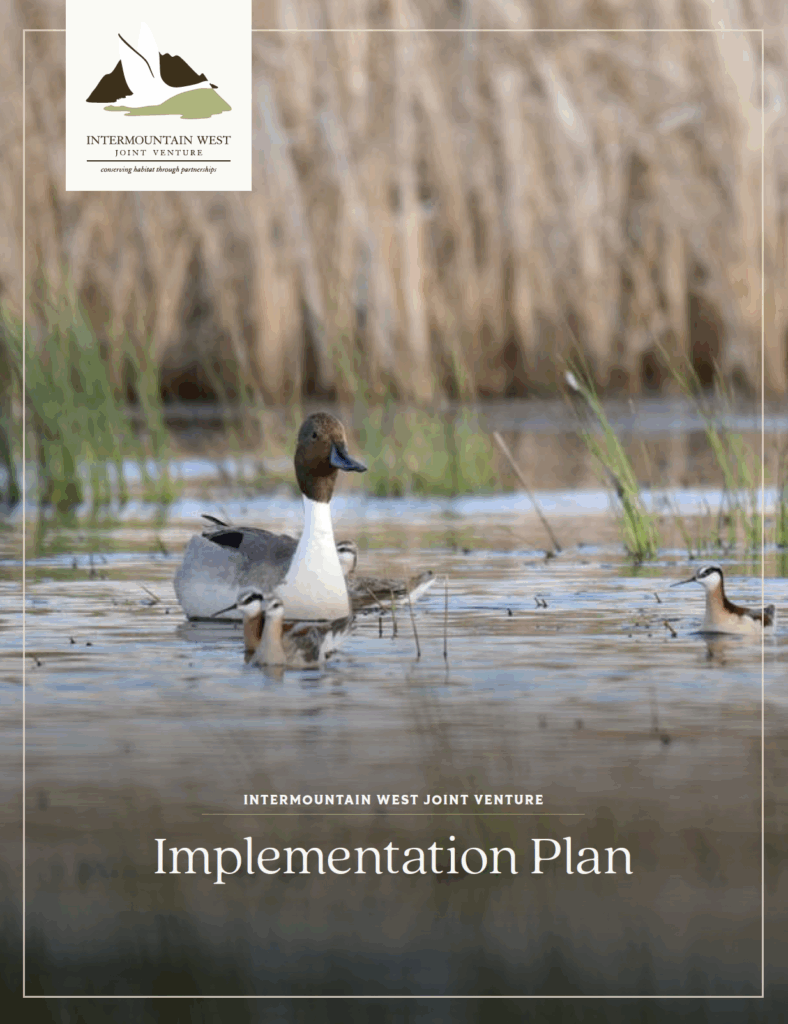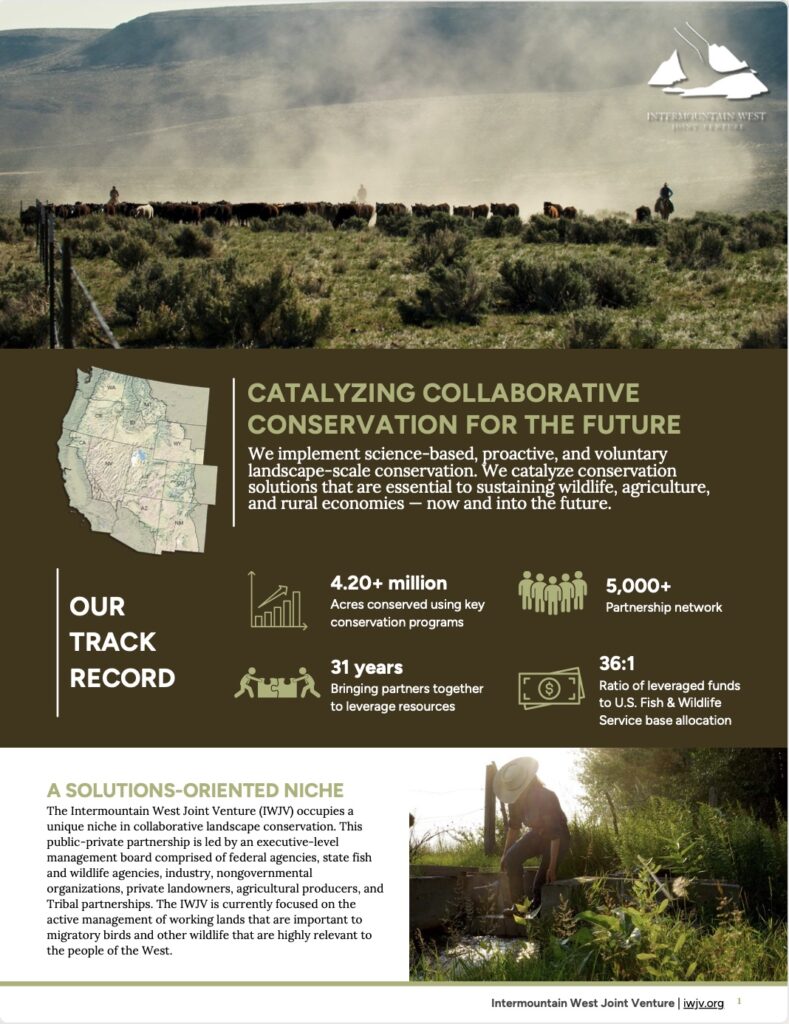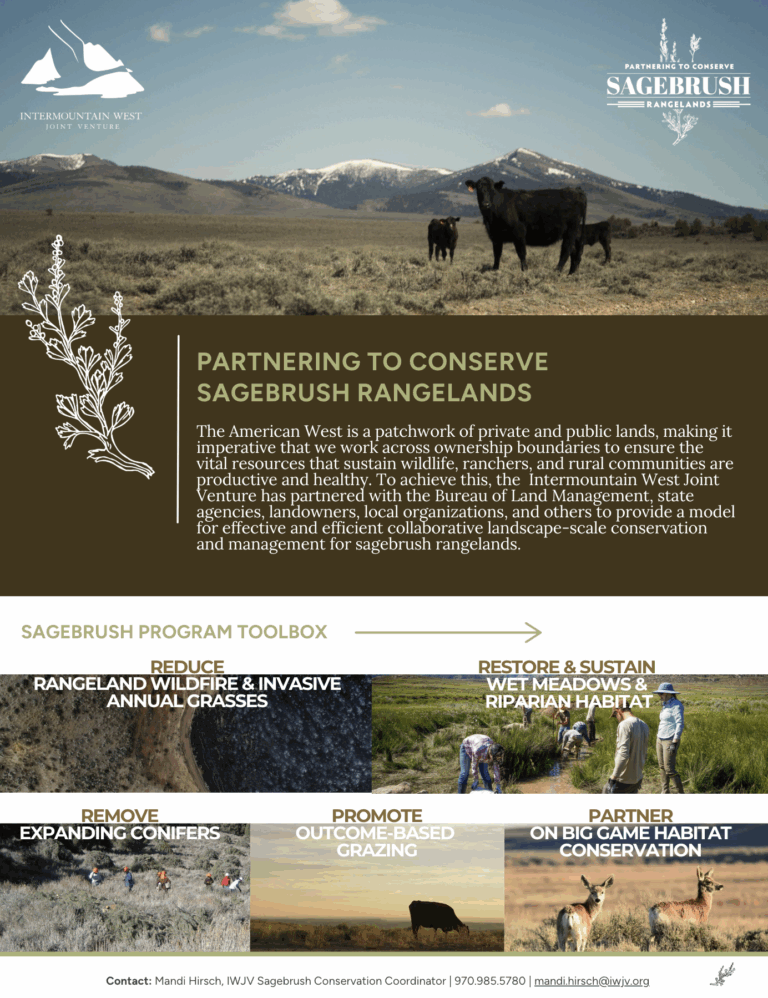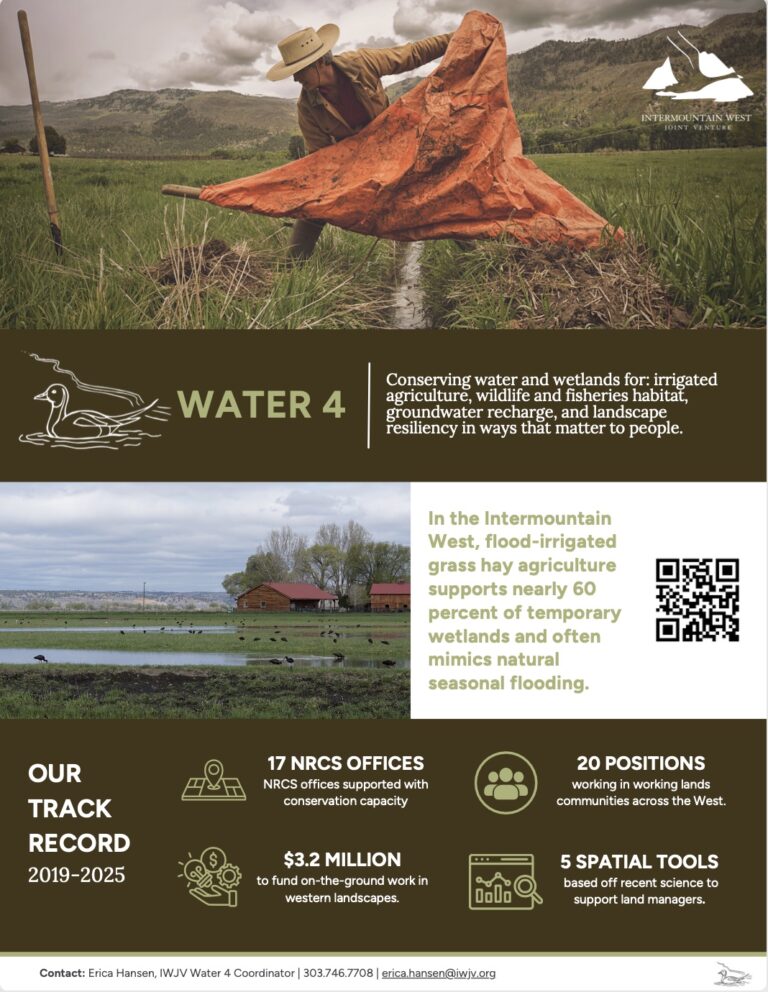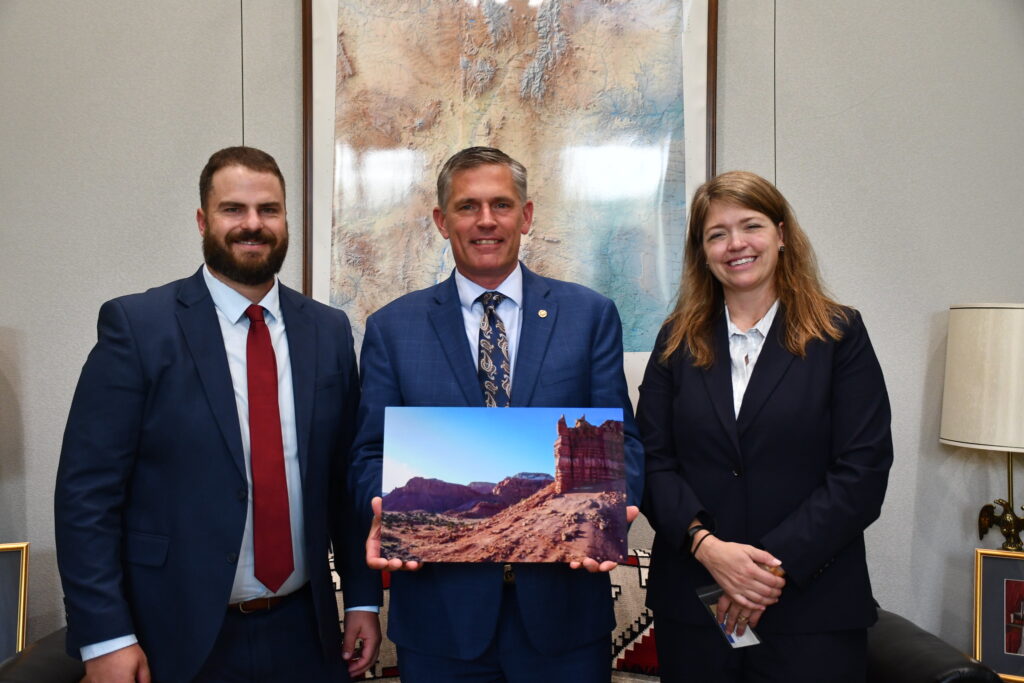Our Vision: An Intermountain West where people, birds, and other wildlife thrive.
The IWJV philosophy can simply be described as a deep recognition that people are fundamental to the story of conservation in the West. People dedicated to working lands, both public and private, compose a huge part of our organizational landscape and are core to our everyday functions. Keystone tenets of the IWJV include finding common ground with others, using science to build durable conservation, and strengthening conservation through a lens of relevancy to people.
The IWJV focuses on water and wetlands, sagebrush rangelands, and western forests. These landscapes collectively encompass the majority of the Intermountain West and support a multitude of bird species. These habitats need collaborative conservation efforts to address their pressing threats: drought and water scarcity are drying wetlands; sagebrush rangelands are being impacted by invasive annual grasses, encroaching conifers, and large-scale wildfires; and western forests have degraded structure and function, contributing to larger and more severe fires. Our approach to this work will stay consistent: commitment to working lands and the people who steward them, and support of land management practices that sustain bird habitat in a voluntary, non-regulatory manner, while leveraging non-federal and federal funds.
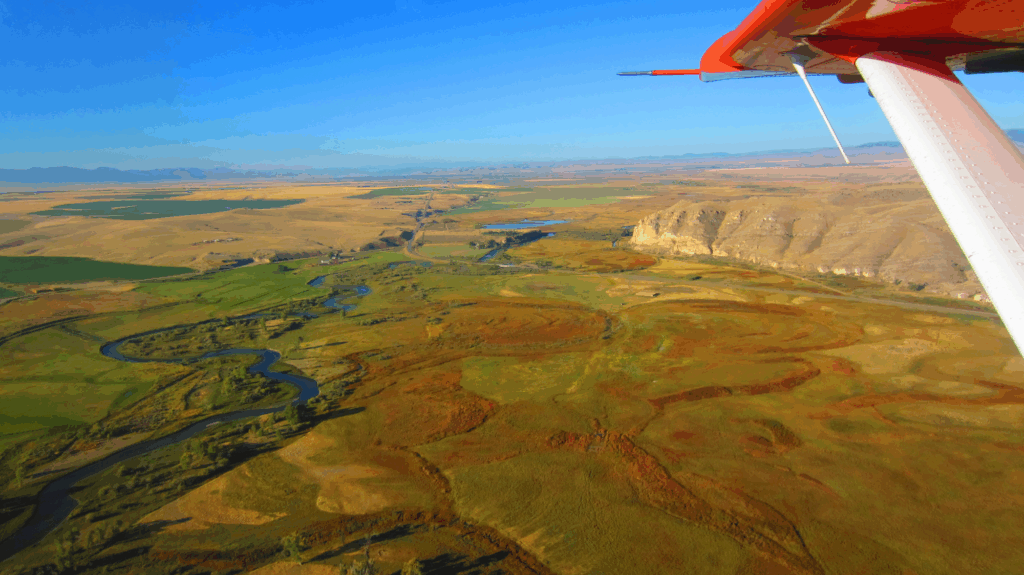

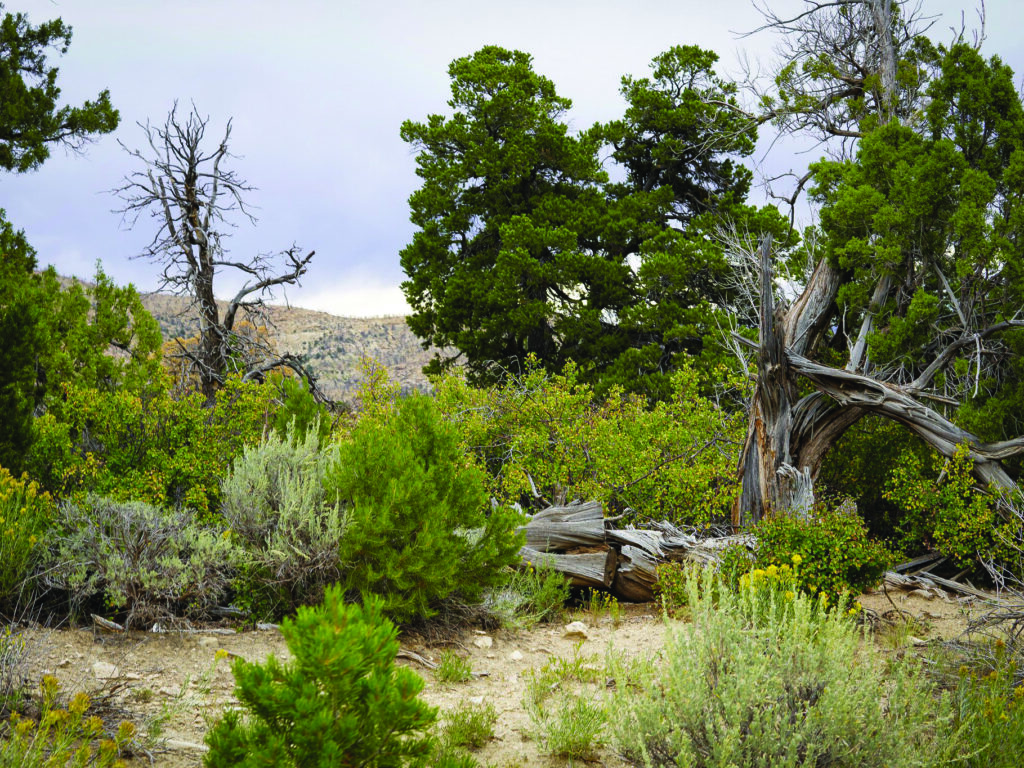
HOW WE DEFINE WORKING LANDS
Lands that are used to support livelihoods and wildlife on public, private, and tribal lands. Our approach to working lands conservation focuses on sustaining bird habitat through solutions that enable working lands to continue providing food, fiber, and forest products for people.
FOCUS AREAS
WATER AND WETLANDS
Wet meadows on irrigated agricultural lands provide substantial wetland habitat in snowpack-driven systems of the Intermountain West. These lands provide vital habitat for migratory birds, sustain floodplain function, and recharge aquifers, but are at risk of fragmentation from rural subdivision, competing water demands, and the ongoing drought.
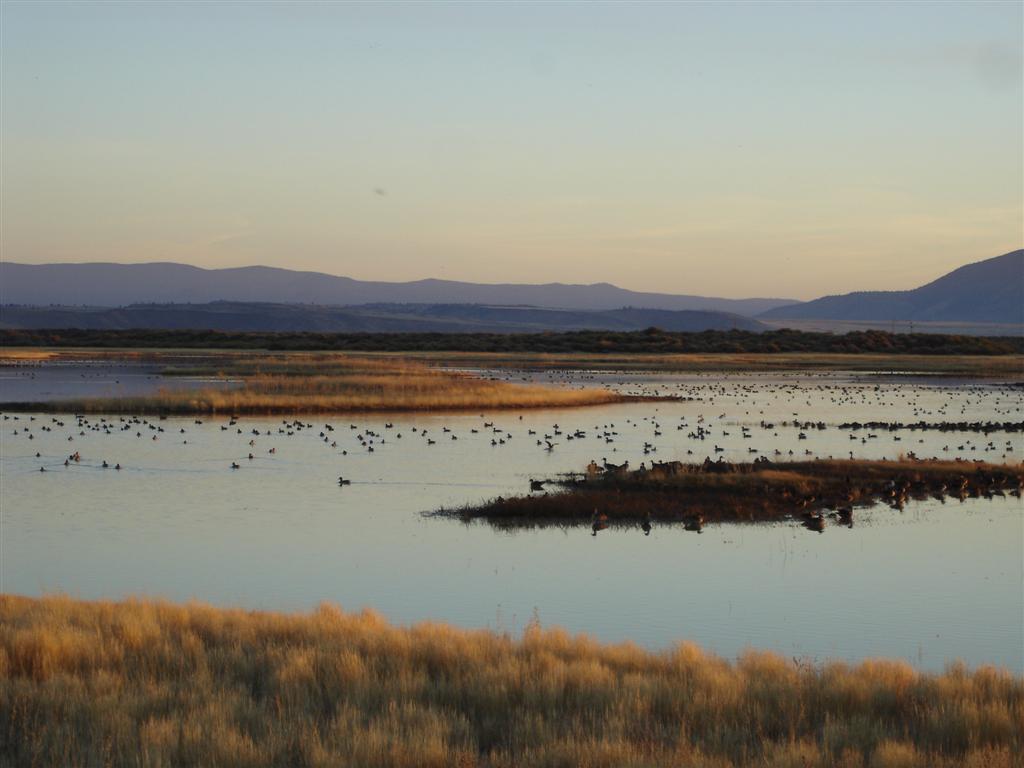

SAGEBRUSH RANGELANDS
Millions of acres of sagebrush rangelands are vulnerable to catastrophic wildfire, annual invasives like cheatgrass, and conifer encroachment. These threats are the primary drivers of the loss of 1.3 million acres per year of sagebrush rangelands, with consequences to sagebrush obligates like Greater Sage-grouse and myriad ecosystem services.
WESTERN FORESTS
We are focused on the active management of dry, frequent-fire forests and pinyon-juniper woodlands. These forests provide wildlife habitat, source much of the majority of the region’s freshwater, and support the wood products industry and rural economies. Changes in forest structure due to fire suppression and altered fire regimes threaten many of the ecosystem services and are contributing to the declines of some forest birds. Active management is key to sustaining healthy forests in the Intermountain West.
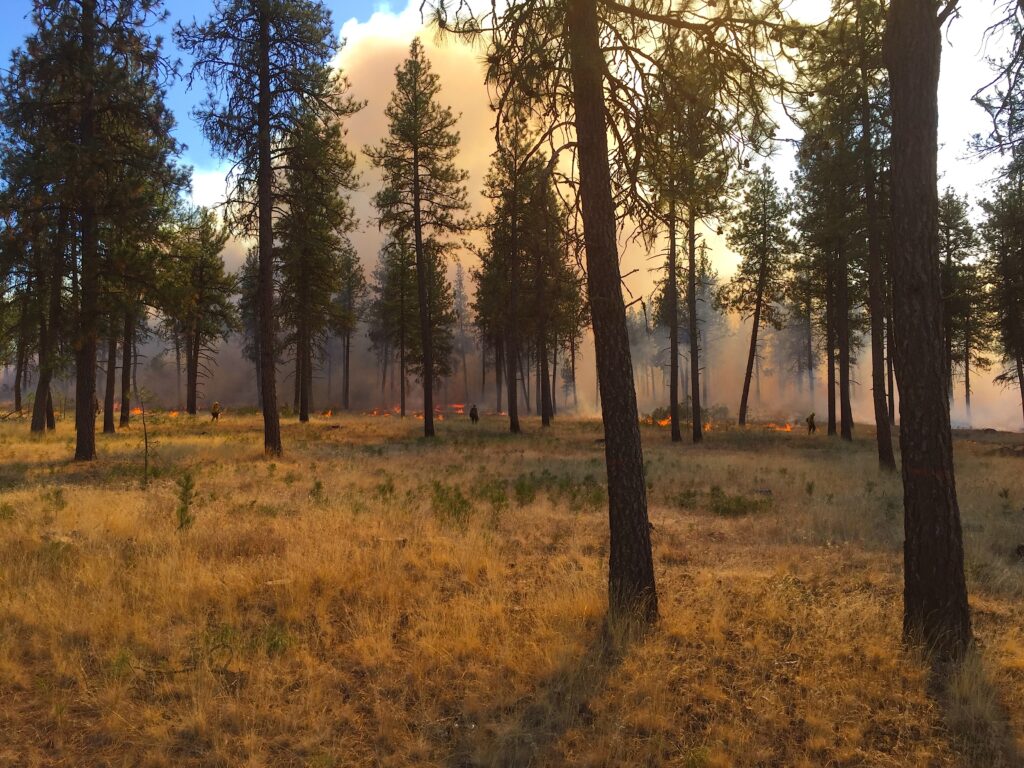
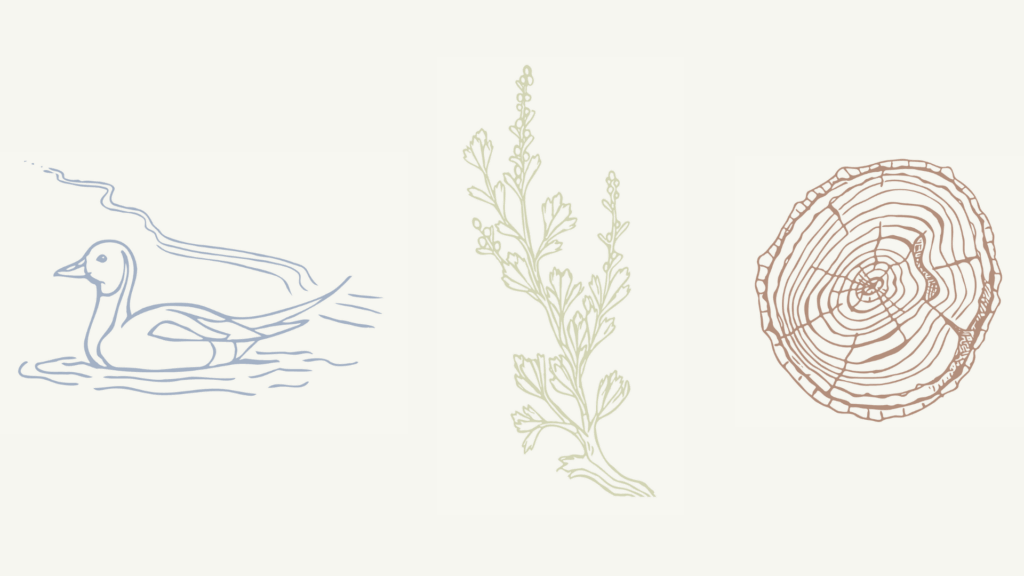
The Role of the IWJV in Strategic Working Lands Conservation
The most effective large-landscape scale conservation efforts involve voluntary, collaborative approaches across jurisdictional boundaries and scales through working lands conservation.
Support Partnership-Driven Conservation
Support partnership-driven conservation through collaboratives with a proven track record of bringing different perspectives together to achieve science-based, landscape-scale conservation. Invest in capacity building through partnerships that have established trust and credibility.
Engage Agricultural Producers
Engage agricultural producers as foundational implementers in conserving valuable working lands that sequester carbon, support landscape resilience, provide habitat for fish and wildlife, deliver an array of ecosystem services, and support rural economies.
Increase the Pace and Scale of Conservation
Strengthen voluntary, partnership-driven conservation programs via increased capacity to deliver unprecedented funding, matching the significant interest in working lands conservation. It is crucial to ensure that federal funding reaches local communities and is flexible for the people to enact voluntary, proactive conservation.
